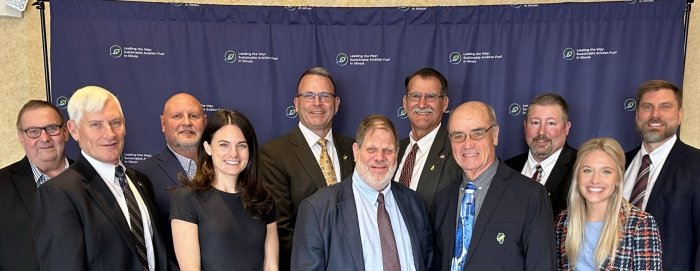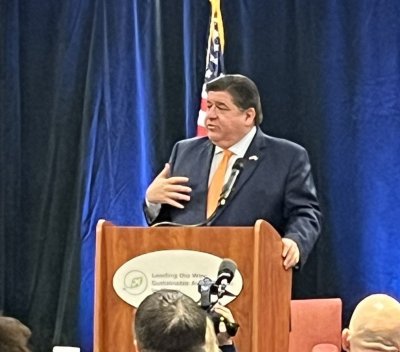
From Fields to Flight: IL Corn Plays Role in SAF Conference
Haley B

“We believe our state has a unique opportunity to combine our agriculture industry, geology, and airline presence around the common goal of decarbonizing the aviation sector,” Pilot and Illinois Corn Growers Association (ICGA) director Chris Gould said. “Corn-based ethanol is an excellent feedstock for SAF. I look forward to being part of this emerging market both as a farmer, doing the right thing, and as a pilot, being fueled by the right thing.
Federal policy and early state legislation gives Illinois an advantage for SAF production.
In 2022, the Inflation Reduction Act (IRA) created a $1.25 SAF producer tax credit for fuel with at least a 50% greenhouse gas reduction. In 2023, Illinois enacted the first $1.50 state purchaser SAF tax credit.

A longtime champion of renewable fuels, Senator Tammy Duckworth (IL-D) highlighted her work ensuring the Department of Energy’s Argonne GREET model can be used to qualify for the SAF tax credits.
The GREET model accurately portrays the lifecycle analysis of corn-based ethanol’s carbon emissions and is recognized worldwide as the best scientific model for GHG emissions of transportation fuels. Under the GREET model corn-based ethanol qualifies for IRA credits. On March 1, U.S. Department of Agriculture Secertary Tom Vilsack announced a delay in the release of a revised GREET model to be used for SAF production leaving farmers and SAF producers in limbo on their ability to participate in the market.
Referencing the Biden Administration’s 3-billion-gallon SAF goal by 2030, National Corn Growers Association Chief Economist Krista Swanson said agriculture can meet the need if allowed to participate. “The potential there is great if we have the modeling in place that allows for ‘ethanol-to-jet’ to happen,” she said.
Swanson said productivity increases would allow corn farmers to produce an extra billion bushel of corn in 2030 on the same number of acres. “We have the ability to meet that demand and also the opportunity to expand ethanol use into a whole new realm,” she said.
“The conference planted seeds and started conversations critical to future developments of SAF,” Swanson said. “As corn farmers we just need federal support for the opportunity to make sure we have a seat at the table.”


